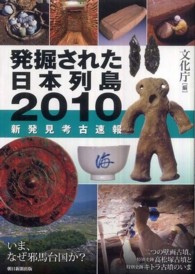- ホーム
- > 洋書
- > 英文書
- > Architecture
Full Description
Built environments are complex, emergent, systemic, and require contextual analysis. They should be understood before reconsidering how professionals and researchers of the built environment are educated and trained to reduce the gap between knowledge, practice and real-world circumstances. There is an urgent need to rethink the role of policy makers, researchers, practitioners and laypeople in the construction, renovation and reuse of the built environment in order to deal with numerous environmental/ecological, economic/financial and social/ethical challenges of providing a habitat for current and future generations in a world of continual change. These challenges are too complex to be dealt with only by one discipline or profession. Combinations of different types of knowledge, knowing in praxis and tacit knowledge are needed.
This book presents and illustrates recent innovative contributions with case studies focusing on five strategic domains and the interrelations between them. These transdisciplinary contributions apply concepts, methods and tools that facilitate convergence and concerted action between participants collaborating in policy definition and project implementation. The methods and tools include experiments in living-labs, prototypes on site and virtual simulations, as well as participatory approaches including citizen science, the development of alternative scenarios, and visioning plausible futures.
Contents
Introduction
PART 1 : STRATEGIC DOMAINS
Chapter 1: Constructing with Nature in Mind
Chapter 2: Planning for Health and Well-Being
Chapter 3: Food for Thought
Chapter 4: Housing Matters for All
Chapter 5: Creating Incremental and Radical Change
PART 2: CONCEPTUAL & METHODOLOGICAL FOUNDATIONS
Chapter 6: Conceptual Foundations
Chapter 7: Methodological Approaches






